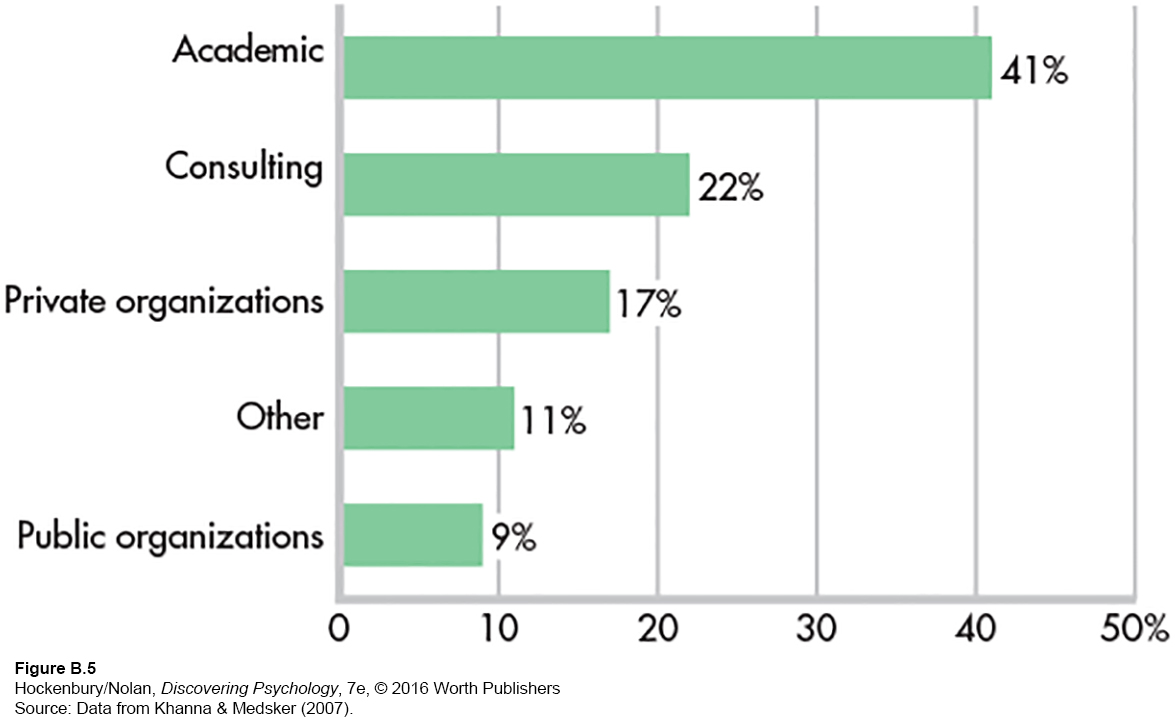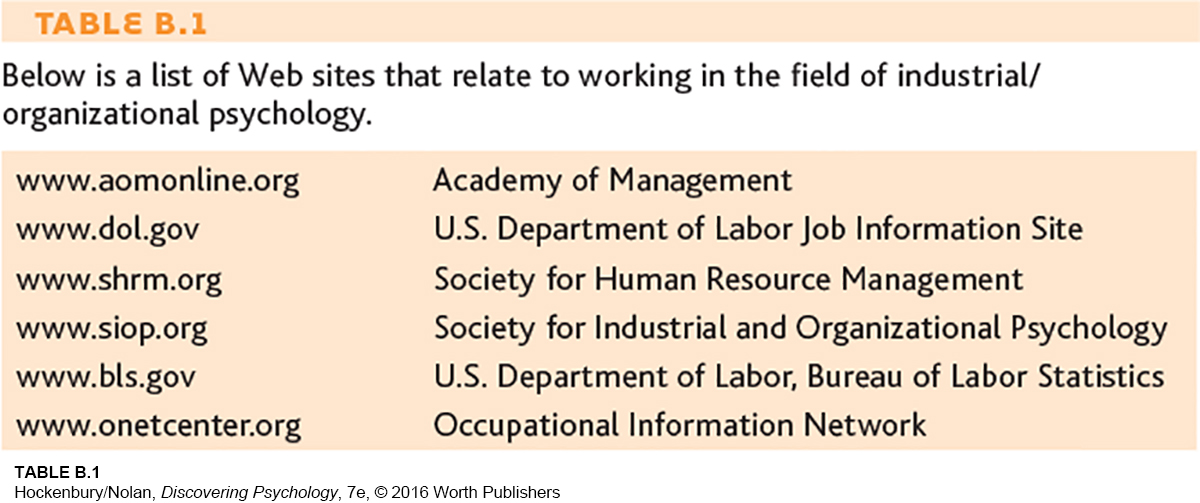Employment Settings, Type of Training, Earnings, and Employment Outlook
Many I/O psychologists belong to Division 14 of the American Psychological Association (APA), the Society for Industrial and Organizational Psychology (SIOP). The division conducts periodic surveys of its members and, as a result, can supply information on topics such as typical work settings, job duties, and salary levels of I/O psychologists.
The employment settings of I/O psychologists are represented in Figure B.5. Of the I/O psychologists who belong to SIOP and who responded to the 2006 employment setting survey, 41 percent worked in academic settings (primarily universities and colleges); 22 percent worked as consultants to organizations; 17 percent worked in private organizations; and 9 percent worked for public organizations (Khanna & Medsker, 2007).

Those with bachelor’s degrees may find work in fields related to I/O psychology, such as in the administration of training programs or as interviewers. However, a master’s (M.A.) or doctorate (Ph.D.) degree is required to work in the field of I/O psychology. Though there are plenty of programs to choose from, with more than 200 master’s and doctorate programs available for I/O psychologists in the United States, admission into these programs can be very competitive, especially at the doctoral level.
The majority of SIOP members hold doctorate degrees (87 percent) as opposed to master’s degrees (13 percent). When selecting your degree, you must consider the length and requirements of the program. Are you prepared to attend graduate school as a full-
If you would prefer to pursue a degree that allows you to quickly apply your knowledge and skills to the workplace, then a master’s degree may be a better fit. Most master’s programs require two to three years of graduate course work and the completion of a research project. Having a master’s degree allows you to work as an I/O psychologist carrying out I/O duties for private or public organizations, teach at two-
Finally, a bachelor’s degree, attained after four years of undergraduate course work, yields numerous employment opportunities in areas involving I/O psychology. These positions include jobs for personnel, training, and labor-
What’s the payoff for all this education and hard work? Salaries for I/O psychologists are dependent upon educational qualifications, the kind of industry, and experience. The 2006 salary survey of SIOP members indicated that the median salary for those with doctorate degrees was $98,500; for those with master’s degrees, the median salary was $72,000 (Khanna & Medsker, 2007). It also helps to know that the job market for I/O psychologists has remained strong over the years and is projected to have an above-
If you would like to learn more about career opportunities in I/O psychology, visit some of the Web sites listed in Table B.1.
